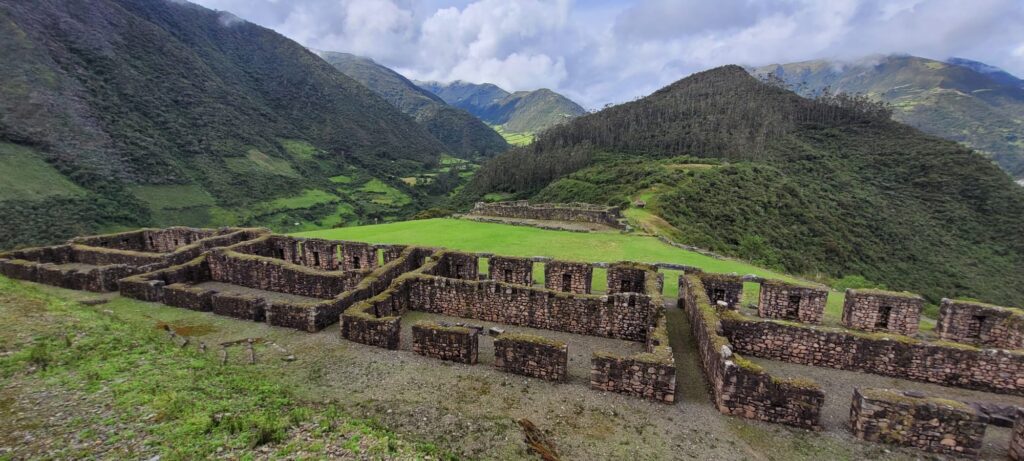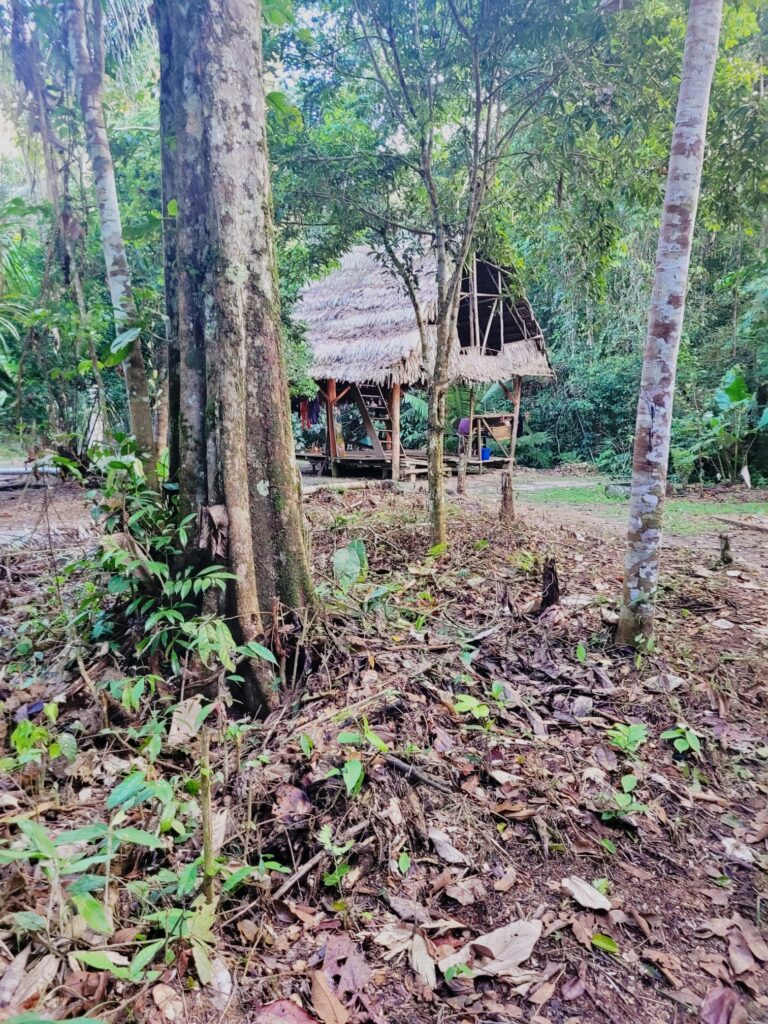350 days a year of perfect wind and absolutely ideal conditions for beginners make Cabo de la Vela or “Cape of the Sail” the best location in Colombia to learn how to kitesurf. We visited Cabo de la Vela and took a kitesurfing course. We are here to tell you everything you need to know about learning how to kitesurf in Cabo. We’ll also tell you where to stay, what to eat and how to get there.
Kitesurfing Schools in Cabo de la Vela
The tiny fishing village of Cabo de la Vela is Located in the La Guajira desert in the northernest part of South America. With its post-apocalyptic landscapes, Cabo de la Vela is a must-see destination when visiting Colombia’s Caribbean coast. When arriving in town, you will find several schools teaching how to kitesurf. All kitesurfing schools are located on the north edge of Cabo de la Vela, which is also the area where all the foreign tourists stay. We usually tend to stay away from touristy areas. Still, after spending our first 4 nights on the southern side of Cabo, we recommend staying on the northern side. Especially if you plan on taking a kitesurfing course.
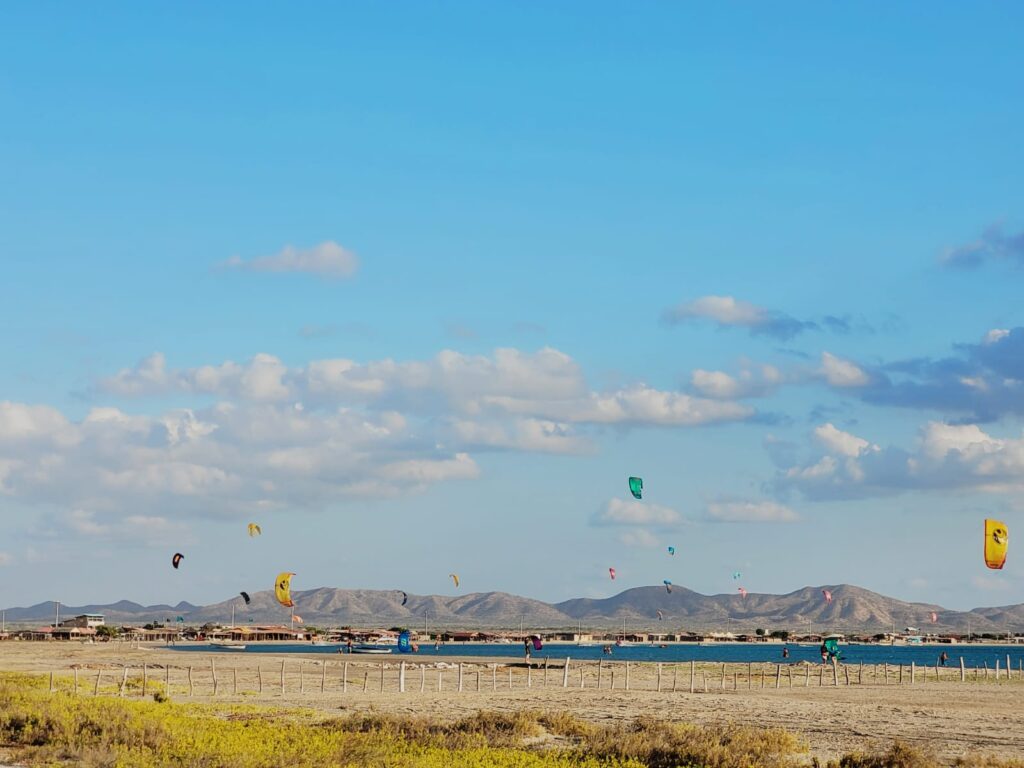
All schools offer kitesurfing lessons and accommodation options, usually in a hammock or a Chinchoro-
a traditional Wayuu hammock. In addition, you will find a restaurant and a bar in each school. The 4 most popular kitesurfing schools are:
- Cabo Kite Center
- Awalayu’u Kite School
- Guajira Kite School
- Tawi kite center
The kitesurfing schools offer several courses and learning programs adjusted to each student’s level and needs. The prices are roughly similar, but you might find some differences in learning methods or equipment that can make all the difference for you personally. We recommend getting there, talking with the teachers, checking out your accommodation options, and making the best decision for yourself.

The first 3 kitesurfing schools in Cabo de la Vela are located right next to one another. While Tawi kite is situated 10 min walk outside of town. There Is an incredible kitesurfing scene in the schools located next to each other. If you are a solo traveler, we recommend staying in them. We were looking for some quiet time in the desert (the rest of Cabo can get a bit loud in the high season). So we chose the Tawi kite center.
How Much is it Gonna Cost You?
Prices tend to vary depending on the seasons. We arrived in the high season and paid 1,300,000 COP (330$) for a 10 hours course. That’s still less than half of what you’ll pay in the US or Europe.
The Course-Prepare to Get Wet!
The most common course is a ten hours 1 on 1 course which takes 3-4 days. Each day you will spend more than two hours in the water with your instructor. The itinerary depends on your personal improvements and varies a bit from school to school. But it usually goes something like this:
- First day – learning how to fly the trainer kite
- Second day – learning body drag and relaunching
- Third day – learning how to water start in a seated position and riding your board upwind.
- Fourth day – learning to ride in a standing position
Learning a new skill can be intimidating because it can take forever, and you usually don’t see immediate results. But this is not the case with kitesurfing. The course is gratifying as you progress with every hour passing and learn a new skill step by step. So prepare to feel the adrenalin pumping in your veins while swallowing a lot of water and crashing facefirst into the sea. And then, suddenly you’ll just stand up on the board and kitesurf. It’s an amazing feeling!
What’s in Cabo de la Vela
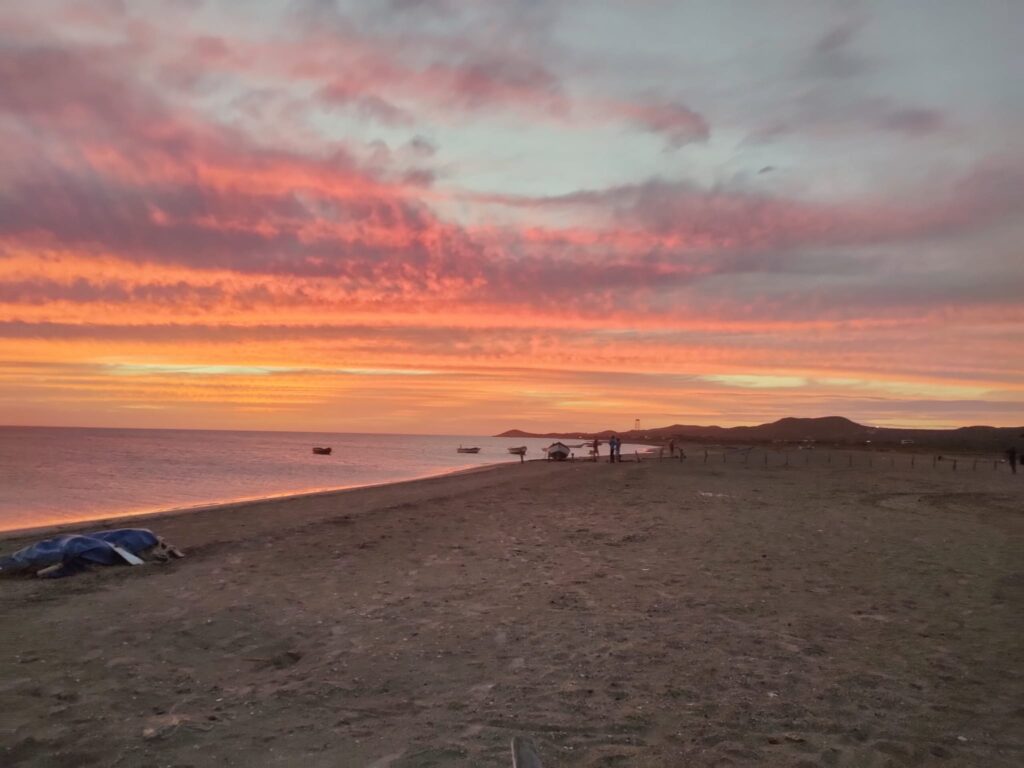
As mentioned before, Cabo de la Vela is in the middle of the La Guajira desert. One of the driest and poorest areas in South America, so don’t expect any fancy hotels. The accommodations and living conditions are basic. Water is scarce, so you usually get just a bucket of water for your daily shower. As in any isolated town, prices in Cabo are higher than in the rest of Colombia, so it’s best to do some shopping for essentials in Riohacha, the capital of the department of La Guajira. But don’t get demoralized! Cabo has been a touristy town for years now and will have everything you might need, from a pharmacy to a supermarket to numerous pizzerias and bars.
Wayuu Culture
Visiting Cabo de la Vela will give you a great opportunity to immerse yourself in the daily life and unique culture of the Wayuu tribe.
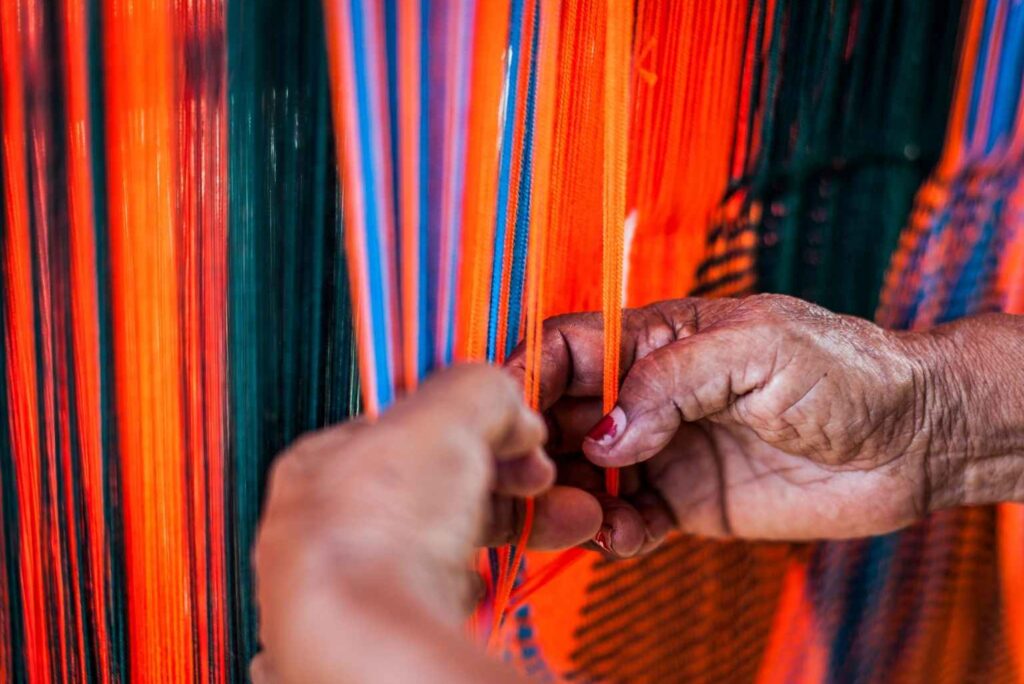
The Wayuu have been living in the desert for hundreds of years and have managed to preserve their culture and traditions. They are a proud people, and you will see their handicrafts, jewelry, and colorful dresses everywhere in Cabo. You can visit one of the many Wayuu communities around Cabo or just have a chat with some of the locals in the town. The Wayuu women weave all day long. So if you fancy yourself a handmade bag or even better – a huge Chincorro, spoil yourself and buy it directly from the artists. Their artwork is famous all over Colombia and in Cabo, you can get the best prices.
What to Eat in Cabo de la Vela
As Cabo de la Vela is a Caribbean fishing village, it’s no surprise that you will find numerous restaurants offering a variety of fresh seafood. There aren’t many dining options, but we are certain that you won’t be disappointed with any of them. They all offer great traditional dishes such as fried fish, goat meat, fish soup, and shrimp. You can also find some international options such as pizza, pasta or hamburgers. A typical meal of fried fish served with rice and Patacones should cost around 20,000 COP. In addition, don’t miss the chance to try mouthwatering fish or shrimp empanadas. You’ll find them in the morning on the main street. Surprisingly, fish empanadas are not that easy to find on the Caribbean coast of Colombia. The only other place we ate them was in Capurgana, by the Panamanian border.
If you love cooking for yourself, head over to the fishing boats in the morning and buy some fresh fish from the fisherman returning from the sea. We bought 2 huge fish for 8,000 COP (2$) and had a great meal for two.
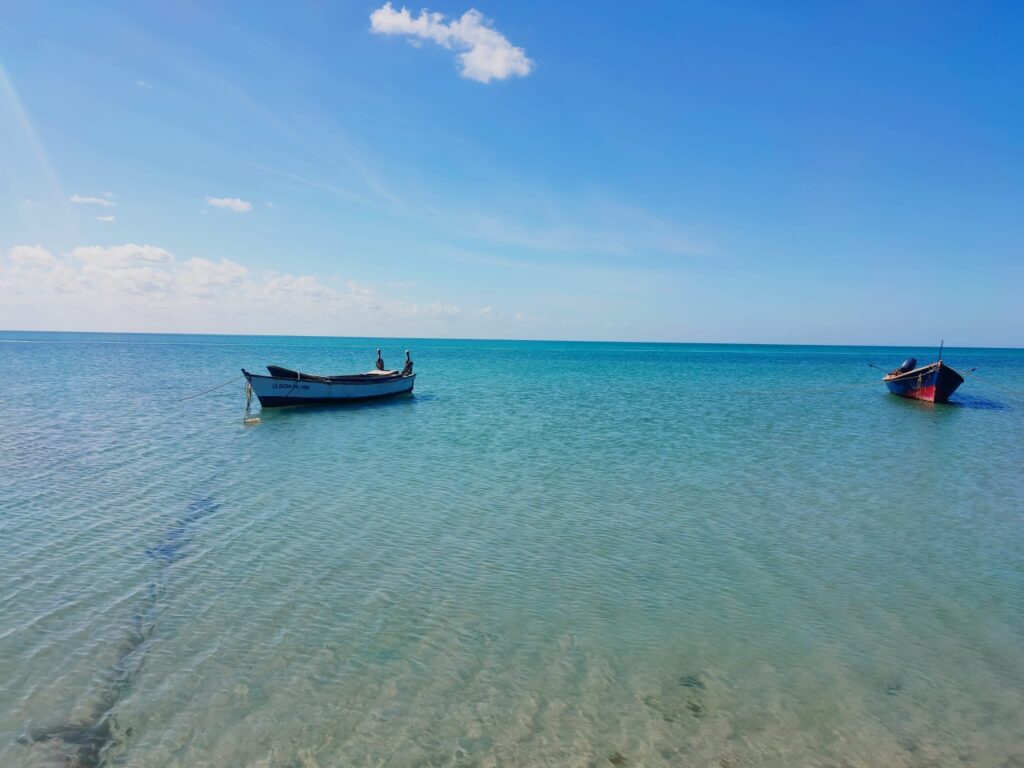
For vegetarians or vegans, it’s probably best to cook your own food as the options in town will be limited. There are a number of supermarkets selling fruits and vegetables. You can cook for yourself in your accommodation – just make sure they have a communal kitchen as it is pretty rare in Cabo de la Vela.
Where to Stay in Cabo de la Vela
There are a lot of accommodation options in Cabo de la Vela, from rooms with AC to cheap hostels, wooden cabins, or Chinchorros. Many of the accommodations are not on any booking platform so you can walk along the main street and check them out for yourself. If you want to stay a bit out of town as we did its better to book in advance as Tawi Kitecenter is usually full.
Tawi kitecenter
We loved our stay at Tawi kitecenter as they offer big private wooden huts right on the beach and a chance to enjoy the magic of the desert. In addition, they are one of the only accommodations in town offering a communal kitchen. You can choose to stay in a private hut or spend the night in a Chinchorro.
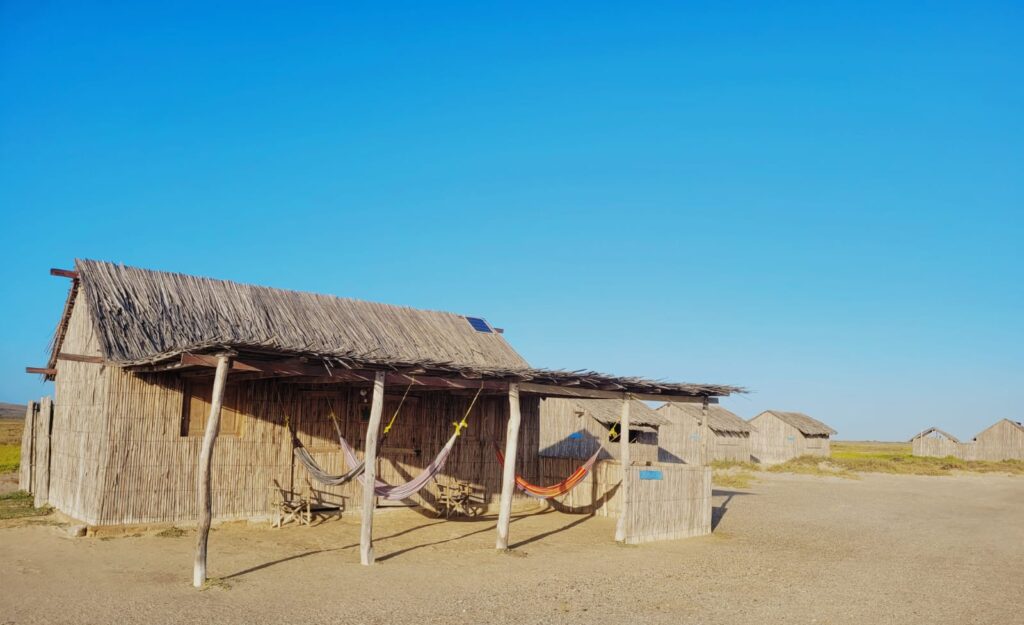
What to Pack
Here are the essentials you need to pack to have a great time in Cabo de la Vela:
Backpack | Daypack | Sandals for Him & for Her | Swimsuit for Him & for Her | Sunscreen | Water bottle | GoPro | Kindle
How to Get to Cabo de la Vela
The ride to Cabo de la Vela has always been long and complex, but it’s part of the experience of reaching such a remote place. Expect to spend an entire day on the road and consider that prices change between the low and high seasons. The prices that are presented here are high season prices.
To get to Cabo de la Vela, you will have to first reach Riohacha, The capital and biggest city in the La Guajira department. Buses leave from Terminal de transport de Santa Marta every 2 hours and cost 35,000 COP. The ride takes 3 hours. Ask the bus driver to drop you off at the spot where the cars leave to Uribia. You will easily recognize the place from the many signs and people offering you a ride. The ride to Uribia is in a private car with other passengers, costs between 15,000 COP – 20,000 COP, and takes 1.5 hours.
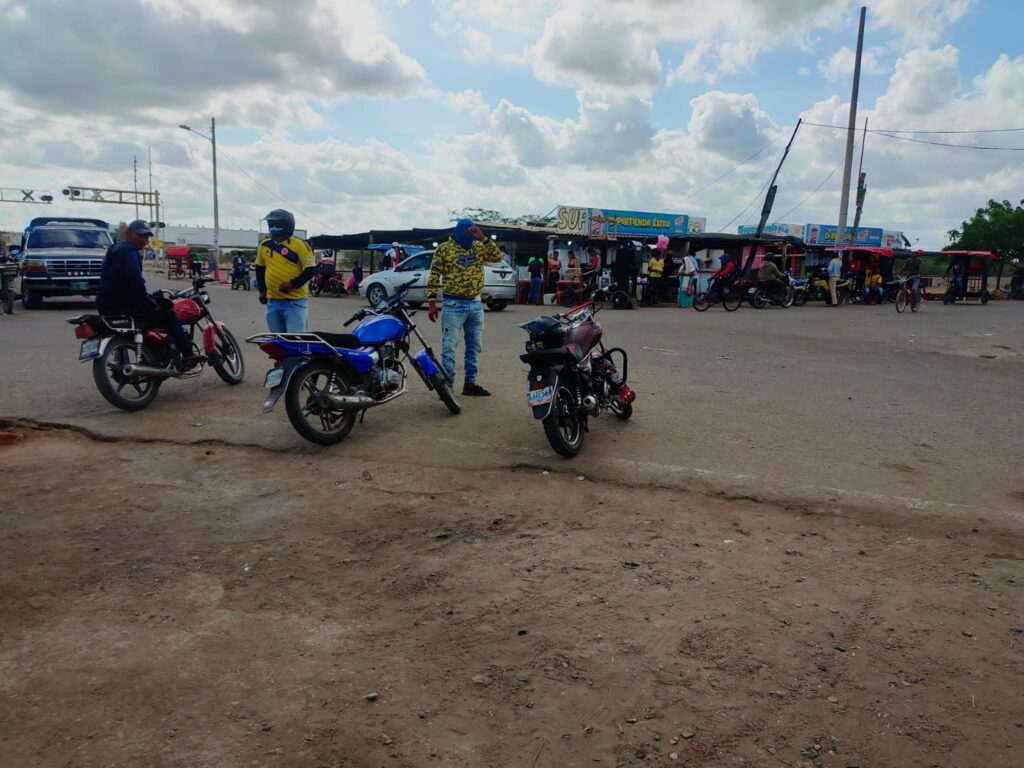
When you get to Uribia, you will be dropped off at the “4 vias” intersection where the 4×4 cars will be waiting. You can choose to go in a comfortable jeep for 40,000 COP or wait for a truck full of people, boxes, and goats for 30,000 COP. With the jeep, the ride will take 1 hour, and with the truck 2 hours.
Final Thoughts
Cabo de la Vela was our final destination in Colombia, and we saved the best for last. Whether you want to learn how to kitesurf or simply wish to explore indigenous culture and spend some lazy days on the desert beach, Cabo de la Vela is a must-visit destination in Colombia!
So, where should you go next? If you want to explore an unspoiled Caribbean destination head on over to the cheerful town of Rincon del Mar with its bubbly people. It may be the same country as Cabo de la Vela, but it’s a completely different world. That’s what we love about Colombia!

